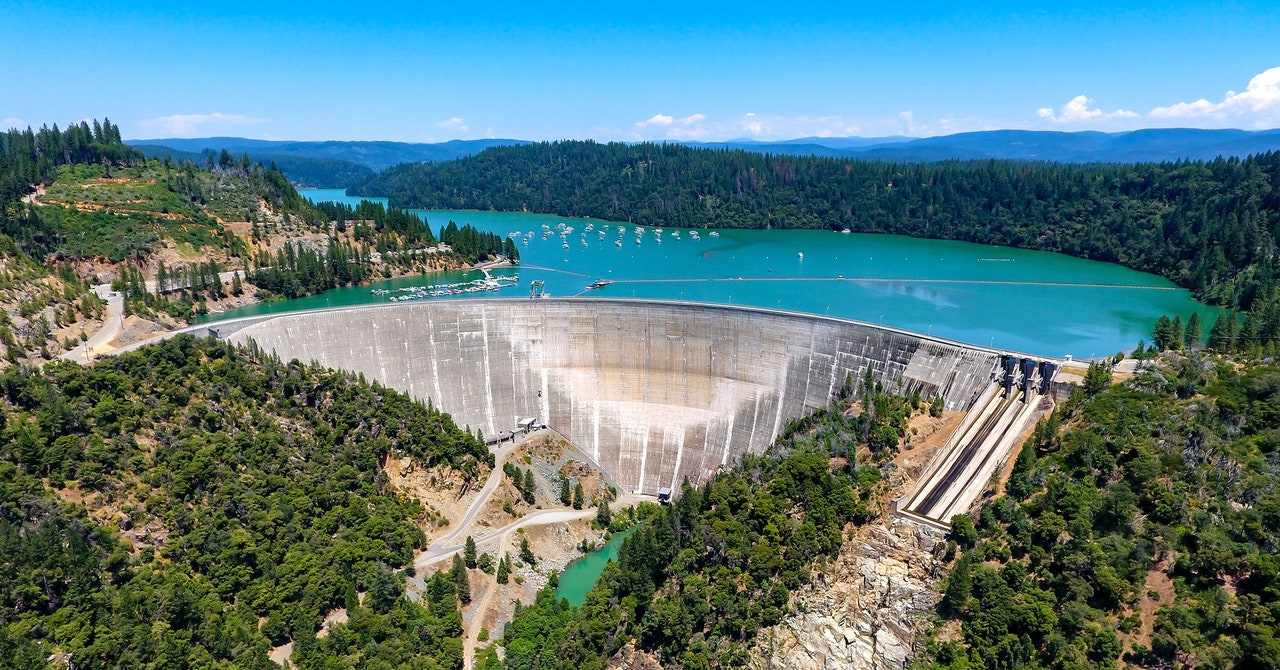
For BC Hydro, which serves 95 percent of British Columbia’s population, heat waves have proven a bigger problem than drought. Rivers and rains remain strong, but the province’s historically mellow springs and summers have warmed up, prompting many people to switch on air conditioners, which jacks up power demand. To keep the ACs humming, BC Hydro keeps a close eye on its fuel supply, that is, its watershed. About 150 monitoring stations, equipped with snow, climate, and surface-water sensors, enable a near-real-time picture of water flows. This helps operators store up water for demand spikes in summer and winter alike.
Tajikistan, which gets fully 98 percent of its power from hydroelectricity, is adapting its fleet with a mix of hard and soft measures. Renovations at the 126-megawatt Quairokkum power plant, built in 1956, were screened against a range of climate scenarios—such as the diminution of its source glaciers. Just replacing its six Soviet-era turbines will hike output to 170 megawatts; the dam will also be reinforced for a 10,000-year flood whose intensity could exceed the previous design standard by anywhere from 15 to 70 percent. Meanwhile, investments by international funders in HydroMet, the country’s long-dysfunctional meteorology service, are paying off: The agency recently gave power generators early notice of a dry year, enabling forward planning.
Recent trends have underlined the need for such changes. Earlier this year, the International Energy Agency said today’s hydropower facilities are on average 2 percent less productive than dams were from 1990 to 2016. Droughts have weakened flows at many plants, the agency said, leaving fossil-based energy to fill a gap the size of Spain’s annual power use. Other dams have been exposed to extreme events for which they weren’t strictly engineered, as in north India in 2021, when a crumbling glacier sent forth a wall of water that wrecked dams and towns downstream. Last month’s disaster in Libya, due to the failure of two flood-control dams hit by a supersized Mediterranean storm, further underlines the risks of maladapted facilities.
Even hydropower’s harshest critics take no issue with nip-and-tuck improvements at today’s dams. But amid a massive expansion planned in the Global South, they warn against overconfidence that hydropower can adapt its way out of climate change. In July, an environmental group in Namibia urged the government to rethink a large dam proposed for the Kunene River, saying it’s prone to the same climate extremes that have sapped the energy of Namibia’s other dams.
As climate disruption sets in, solar and wind can provide equivalent power with less risk, says Josh Klemm, co-executive director of International Rivers, a human rights organization focused on river communities. “We need to really reexamine plans to develop new hydropower,” he says. “We’re only going to deepen our reliance on a climate-vulnerable energy source.”
The Army Corps, meanwhile, is in the early stages of studying whether FIRO can be attempted at 419 other dams under its umbrella. Scaling up FIRO isn’t entirely straightforward; other parts of the US have different kinds of precipitation events than California does, and some of these are currently a lot harder to predict than atmospheric rivers. But Talbot is optimistic that the ever-improving forecast science can find efficiency gains there for the taking. “It’s making your existing infrastructure work harder for you,” he said. “In the face of climate change, this sounds like a great way to position ourselves for buffering that.”

